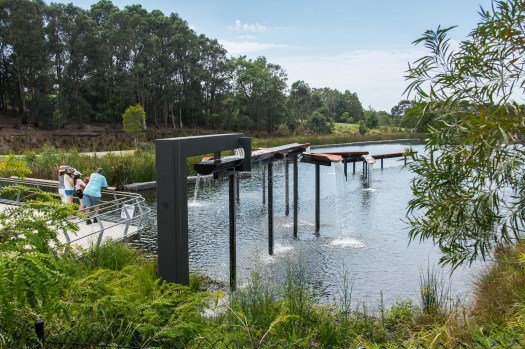
A partnership between state and local governments, water utilities, land management and community groups has enabled the most efficient delivery of a large urban waterway project, officials say.
Less than a decade ago, Bannister Creek in Perth was a “no-go” area for locals because of significant antisocial behaviour in and around the area. Many houses along the creek screened and fenced it off from view.
But today the site is a favourite walk for seniors living in the local aged care facility and among residents walking or excising in the area’s open public space.
Houses have been installing see-through screens and back-garden patios to take in the view.
Bannister Creek is among the areas that have been rejuvenated in Perth’s Urban Waterways Renewal project – an $8.5 million initiative involving all three levers of government and numerous state agencies and community groups.
The project, which successfully engaged 1,600 community volunteers, retrofitted 11 sections of the urban draining systems within the Canning River catchments in the Perth metropolitan area.
Since it began in 2007 the project has restored 3.3 kilometres of traditional urban drainage into living streams, installed more than 424,000 plants, and removed 18 hectares of weeds and 4,600 cubic metres of sediment and rubbish.
But in addition to the water and environmental benefits the project has delivered social, recreational and cultural benefits, including improved public amenity.
In a paper presented at a recent international conference on water sensitive urban design, three officials involved in the initiative say it has provided a “blueprint” for future project delivery.
“The project has inspired new ways of doing things and is a model that other organisations and governments can follow,” according to Agni Bhandari from the state’s Department of Water and Environmental Regulation, Brett Kuhlmann from South Eastern Regional Centre for Urban Landcare and Scott Davie from the Water Corporation.
“A long-term benefit is in the way people are viewing and caring for these sites and seeing what is possible for urban waterways and draining,” they say.
Various stakeholders involved
The project was initiated after the Swan Canning River system was identified as a “hot spot” in 2006 because of its high levels of nitrogen and phosphorous.
A funding injection of $4 million from the Commonwealth was matched by the state and three local governments (the cities of Gosnells, Armadale and Canning).
In addition to local government, the project involved SERCUL, the water and biodiversity departments and the Water Corporation.
“The project drew together local landcare groups, state and local government agencies and, importantly, a volunteer army. More than 1,600 volunteers took part in the project during its lifespan, contributing 6,900 hours of work worth around $200,000,” the officials say.
The project had four main aims: healthy water, healthy habitats, educated communities and recreation and wellbeing.
Navigating different agendas
The officials note that as water resources and environmental assets cross departmental boundaries there were many stakeholders involved, each with different interests and often conflicting directives, which could delay progress.
“The project team gathered each of the stakeholders together to collectively identify the opportunities, constraints and to overcome the barriers. The project adopted a multidisciplinary approach to involve internal and external stakeholders to enable a common vision.”
The team also organised five workshops and 17 site tours and successfully engaged eight community groups and 10 schools in the project.
Environmental, social benefits
The project incorporated a monitoring and evaluation program, which shows the measures taken have contributed to improved water quality, reduced nutrient load, prevention of fish kills and reduced flood risk.
It also contributed to reduced heat island effects and improved urban amenity.
The officials cite a study that found the project also contributed to a boost in house values in the neighbourhoods around the retrofitted systems. At Bannister Creek, the median home within 200 meters of the restoration site increased in value by $17,000 to $26,000.
The project also increased stakeholders’ understanding and knowledge of local hydrology and water technologies, they say.
‘Leading example’ of project delivery
The officials conclude that the project is a “leading example” of involving partnerships between government agencies, landcare, community groups, schools and volunteers “to achieve outstanding on-ground water management and environmental outcomes.”
Given that irregular and insufficient funding is often a key issue in the planning and management of major projects, the officials recommend that relevant agencies and community stakeholders “provide shared ongoing commitments and contribution”.
“Ongoing contribution of even a small amount of in-kind support or resources from various agencies and stakeholders can become a significant contribution to expand such projects,” they say.
Comment below to have your say on this story.
If you have a news story or tip-off, get in touch at editorial@governmentnews.com.au.
Sign up to the Government News newsletter.

